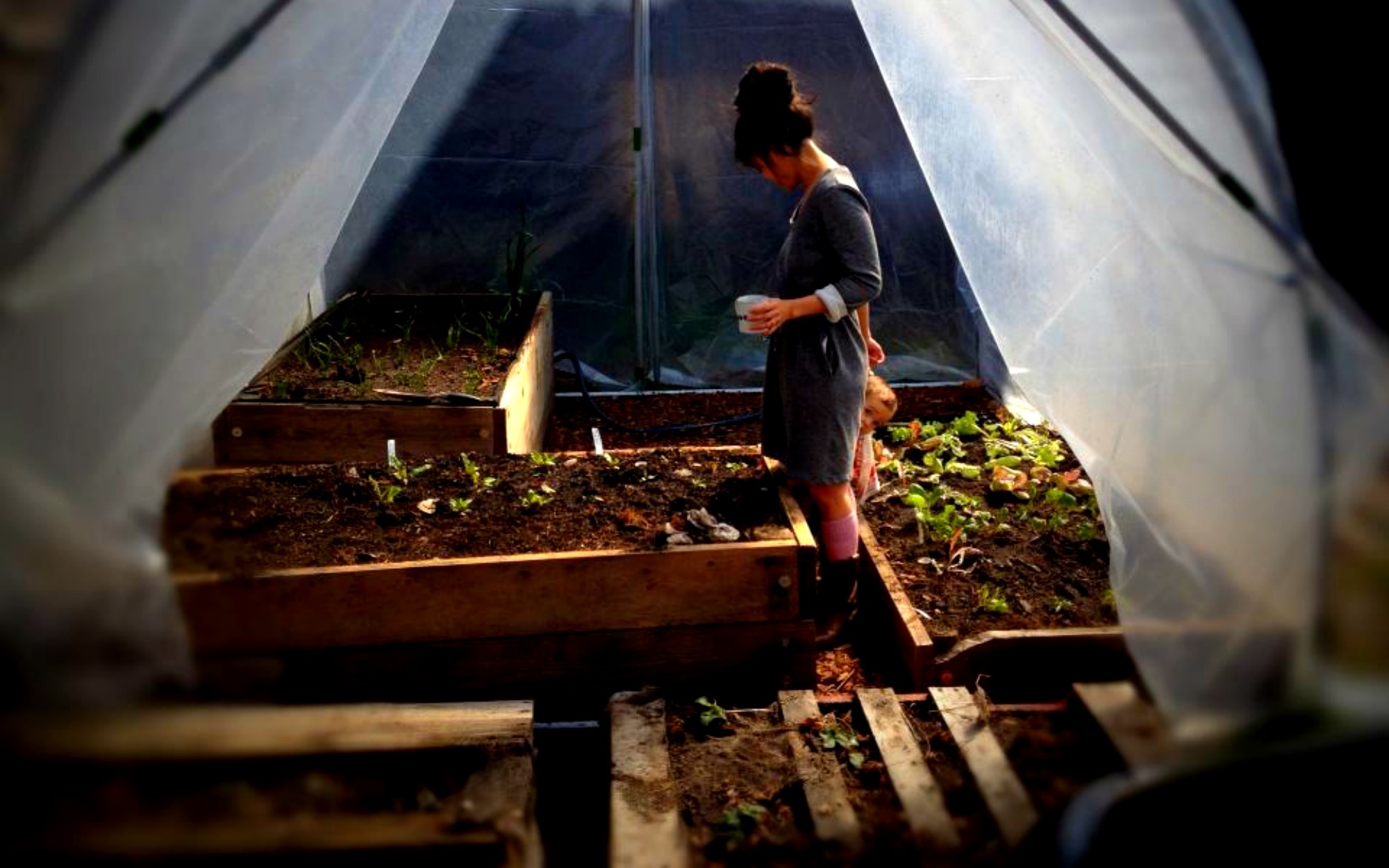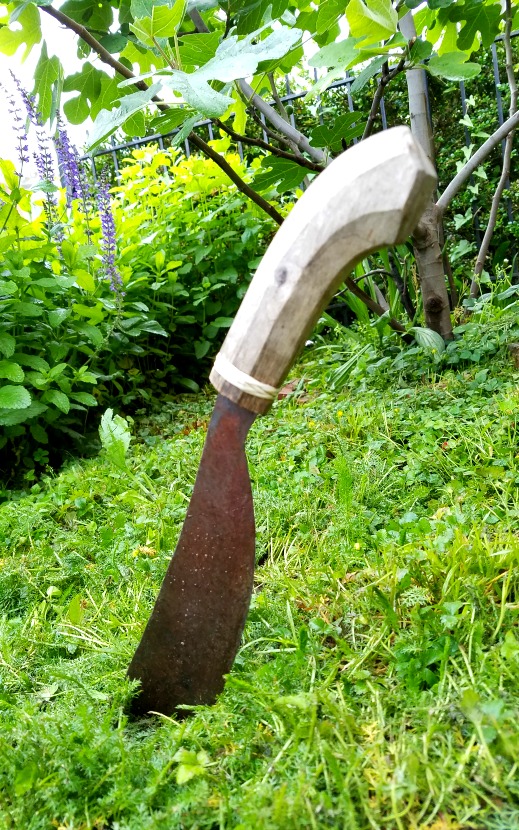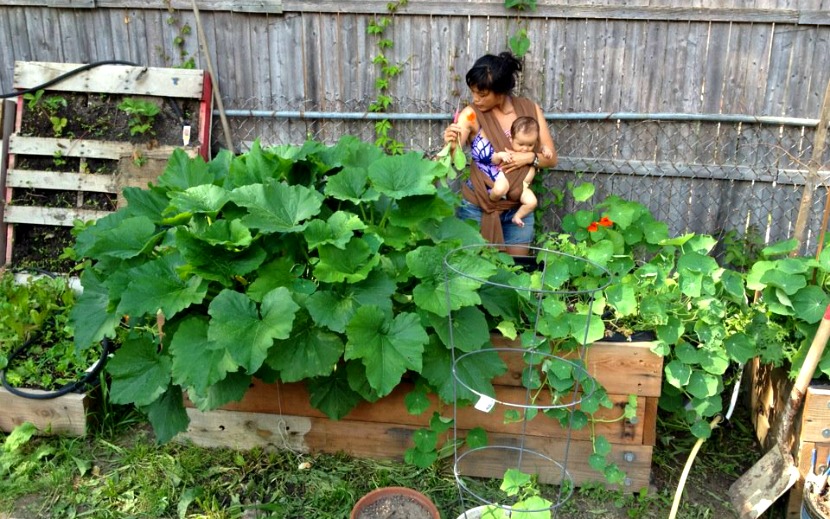My Bolo, My Garden, My Grandmother

What ties us to our traditions? Sometimes it’s language. Sometimes food. And sometimes, it’s an object — a talisman of sorts, that transports us to the motherland, and magically connects us to family both alive and dead. For our Filipino-American Mash-Up Alexis Diao, her bolo, a machete with a deep significance to Filipino culture, links her to the grandmother she never knew.
And since we know you’re running out to find a bolo of your own right now, here are her tips for maintaining your machete!
“Bolo?” The airport security guard asked, his eyes growing wide.
“Oh-oh,” I confirmed through my limited and by all means terrible Tagalog. “Sundang,” I added in the local tongue.
I didn’t know what was going to happen, but I kept a straight and innocent face. Would they take my machete away? I knew it wasn’t against the law to check a knife in through customs, but you never know when you’re traveling abroad.
The guard called over his colleagues – three in total. They took the knife out of its sheath and examined it, then they examined me. What would a 5-foot-tall Filipino-American woman want with a nearly foot-long, handmade blade?
“Pasalubong!” I explained, which means something like “souvenir” in Tagalog.
The guards laughed, and nodded in understanding. Filipinos respect knives – love knives, even. So they let me through, machete and all, and took away my Jose Rizal matches instead.

I never met my paternal grandmother, but I think that if we knew each other we would get along pretty well. By all accounts, my dad’s mom was a strong, imposing woman with angular features and no-bullshit eyes. I imagine her skepticism came in handy when raising six children. She grew up on Siquijor, a small island in the central Philippines, notorious for its voodoo and witchcraft. I fell in love with Siquijor in 2007, when I had the joy of visiting her hometown and relatives in Lazi Province. It was my first time visiting the Philippines.
The waters of Siquijor are emerald green, and are perpetually tumultuous. The island is only accessible by boat, and legend has it that you are sure to encounter rocky waters every single time. It was here I saw my first rattan flooring — floor weaved together with bamboo that’s strong enough to hold multiple people but light enough to see right to the ground 15 feet below. Dogs on the island were second citizens – often blocking the road ignoring honking cars as they snoozed in the dirt. It all seemed like a dream to me, Siquijor. This island is where my grandmother began, the impetus for her appreciation of flora, her knowledge of gardening.
The family I met there was a proud, boisterous bunch. “It’s the ‘L’” they sang: “L” for Lazi, and Ligutom, my grandmother’s maiden name, which means “hungry.” During our visit they held an enormous feast and told a lifetime of stories about my grandparents. (Into a microphone, of course, as an amuse bouche before hours of karaoke that would follow.)
I couldn’t imagine why my grandmother wanted to leave this idyllic place, but then I think she was just like her name: hungry. And so she moved off the island to Cagayan de Oro (City of Gold), to teach, raise a family, and explore life’s possibilities.
It was on my second trip to the Philippines, in 2009, when I bought my bolo. While traveling through the island of Bohol with my family, I insisted that our driver pull over when I saw a shirtless man making knives out of a makeshift tent on the side of the road. I mean, how could I not? My titas, or aunts, found my fascination amusing and kindly obliged.
The welder nodded at me, continuing to pound knives into shape, sparks flying and protective eyewear nonexistent. My Tita Inday pointed at a nine-inch blade and explained that my grandmother used to have one just like it.
Sold.
And so, I became a proud owner of a Filipino bolo, or sundang, as its called in Cebuano, the local language. A bolo is similar to a machete. It’s a front-heavy knife, meaning most of the weight is in the blade instead of the hilt, and the tip is often blunt or round, rather than pointy. Both characteristics make it ideal for farming, chopping vegetation or cracking open coconuts. Bolos have a special place in Filipino history: Revolutionaries fighting Spanish colonialists wielded them. A statue of national hero Lapu-Lapu, the native who killed Ferdinand Magellan, depicts him holding a bolo. It is a common weapon in Filipino martial arts. But originally, the bolo was a humble gardening tool.
And that’s how my grandmother mostly used hers. She was an avid gardener and the bolo was her favorite tool. I’m told you could find her in the garden every Saturday morning — bolo in hand as she harvested, transplanted, and weeded. I imagine her, a stout, broad-shouldered woman hunched over the garden, bolo singing in the hot morning sun or resting on a string around her waist.
She kept her bolo nearby at all times, in her desk drawer at work or hidden in her purse. And when she passed away, they buried her with her trusty knife to protect her in the afterlife.
It took me a while to get the hang of my bolo. When I first arrived back to the U.S with it, I was staying with a friend in Berkeley and, stoked beyond reason, I pulled the knife out of my bag to show off, leaned out of the window and started hacking at the nearest bush I could reach.
It was a fun party trick, but it wasn’t the best use of my bolo. It wasn’t until I started gardening that I began to appreciate it as a tool. After my daughter was born, it seemed that tending vegetables would be a cinch next to raising a child. Some people Netflix on maternity leave. We built raised beds and started a garden. I slung my daughter to my back and, like the mothers before me, bent over the soil, bolo singing in the air cutting through roots and transplanting brassicas.

I had never gardened before. But the more I engaged in it, the more connected I felt: to myself, to my partner, and our new life together. There is something palpable about tending to life in a garden. It is ancient and grounding, and in retrospect, it was a welcome mirror to the trials of new motherhood.
Without realizing it, gardening also brought me closer to my grandmother and closer to my roots. I wonder sometimes, bolo in hand, if she felt the same centering in the garden. If she took refuge in the garden’s life cycles, and the symbiotic relationship between plant and planter —whether to prune or water or fertilize, or whether to sit back and allow the plant to run its course.
Gardening season is well upon us at my home in Washington, D.C. Spring has sprung and despite a record 15 days of rain, I honor the gift of water to the garden. The roses have made a tremendous return, our daughter’s fig tree in its fourth and most fruitful year, and the strawberries are beginning to redden. The first strawberry mother (now grandmother) that we planted when my daughter was born, is coming to its end.
Eventually I will take my bolo, and dig it up to make space for new growth. As the season turns to summer and the tomatoes come to, so my little family will welcome a new addition. And I, like the mothers before me will seek my center. Bolo in hand, I will continue the tradition to tend, weed, harvest, and observe.





